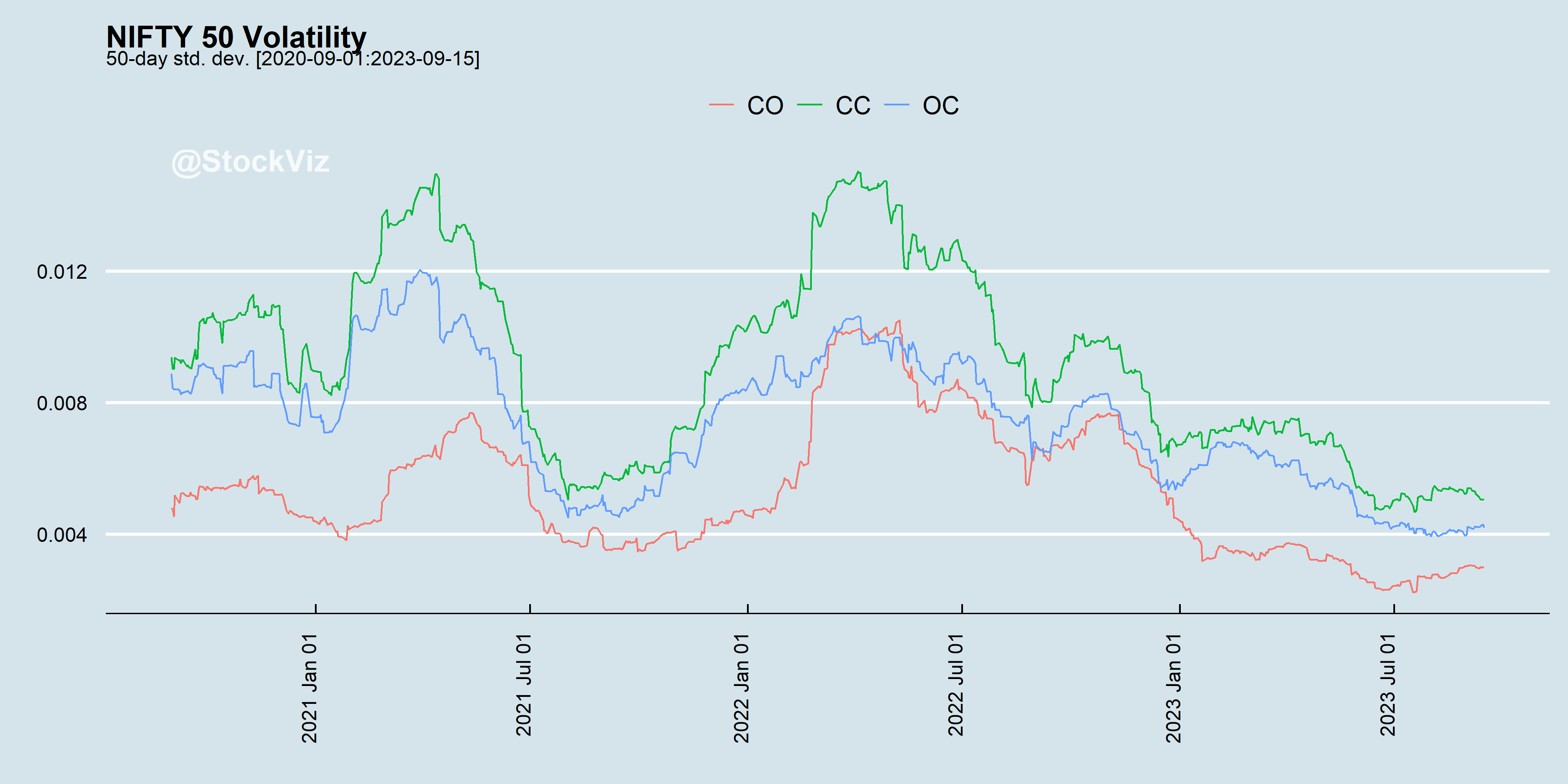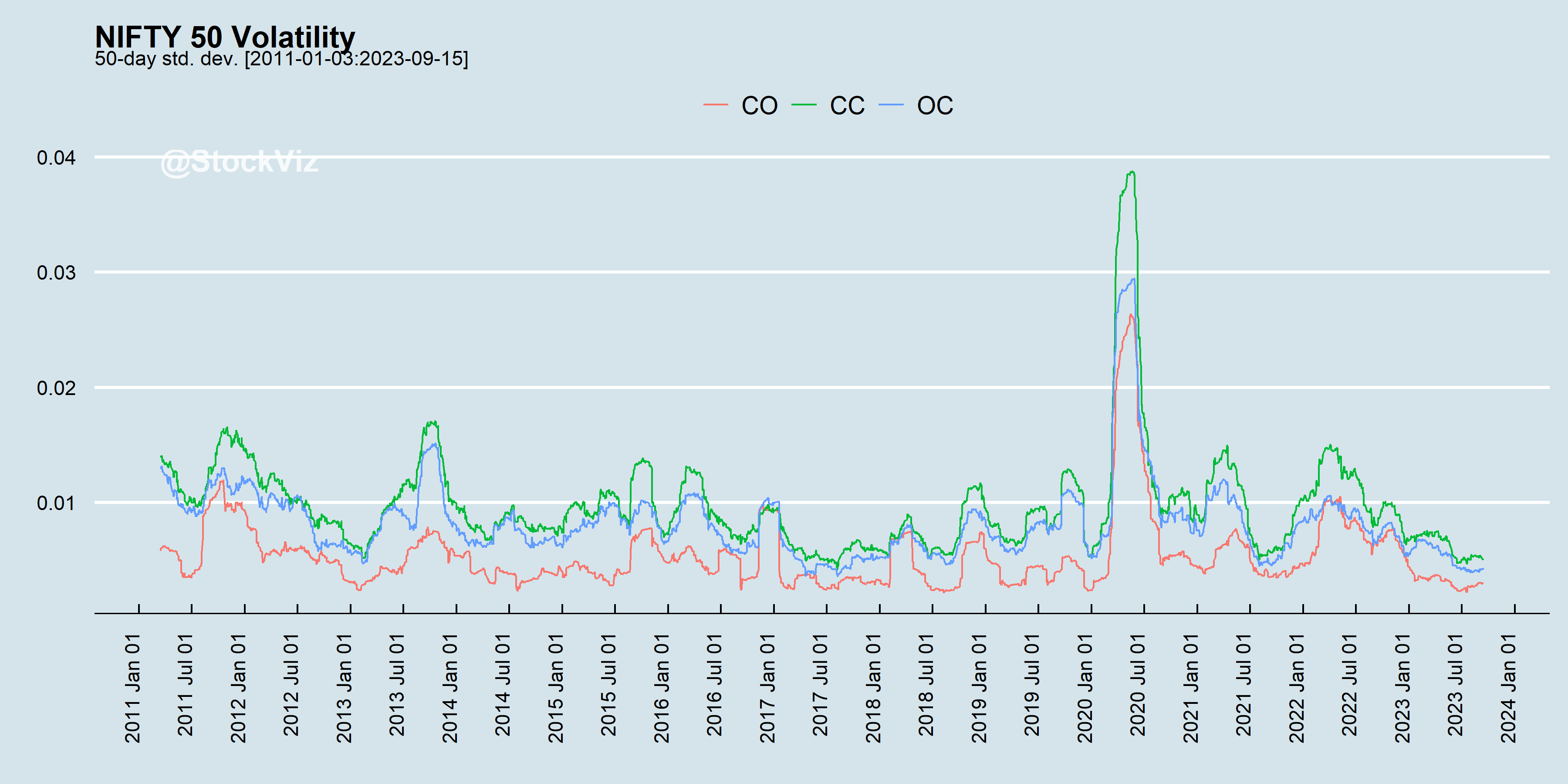Does trend following work on bonds? According to alphaarchitect, it should. However, they use data going back to 1928 and we wanted to look at something more recent. Also, we wanted to check if it worked for Indian bonds?
For Indian bonds, you are better off buying and holding. Once you consider transaction costs and taxes, there is no benefit.

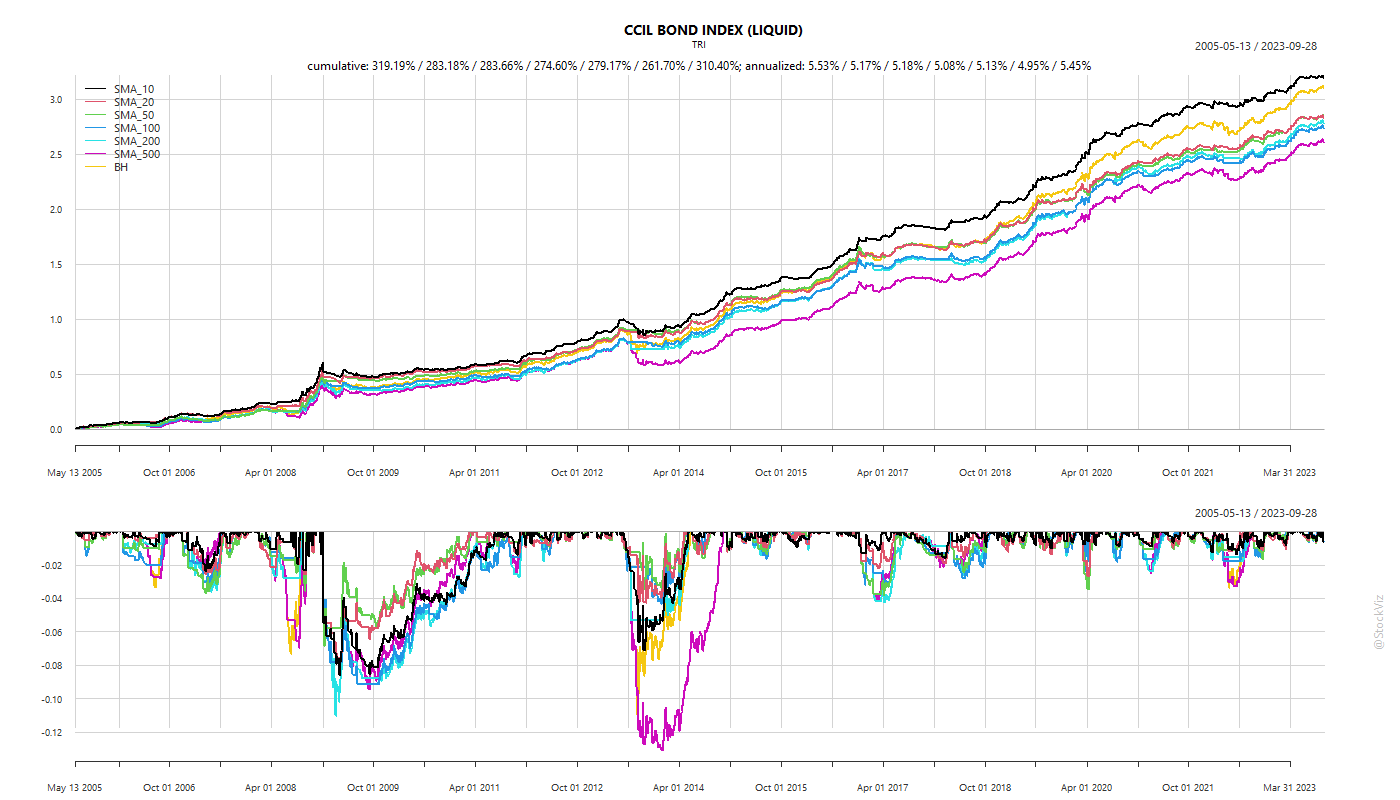
For US, we ran the same SMA scenarios on the TLT (20+), IEF (7-10), SHY (1-3) and AGG etfs. There is some benefit to applying a 100-day SMA filter on the first three. However, the after-cost benefits are questionable.
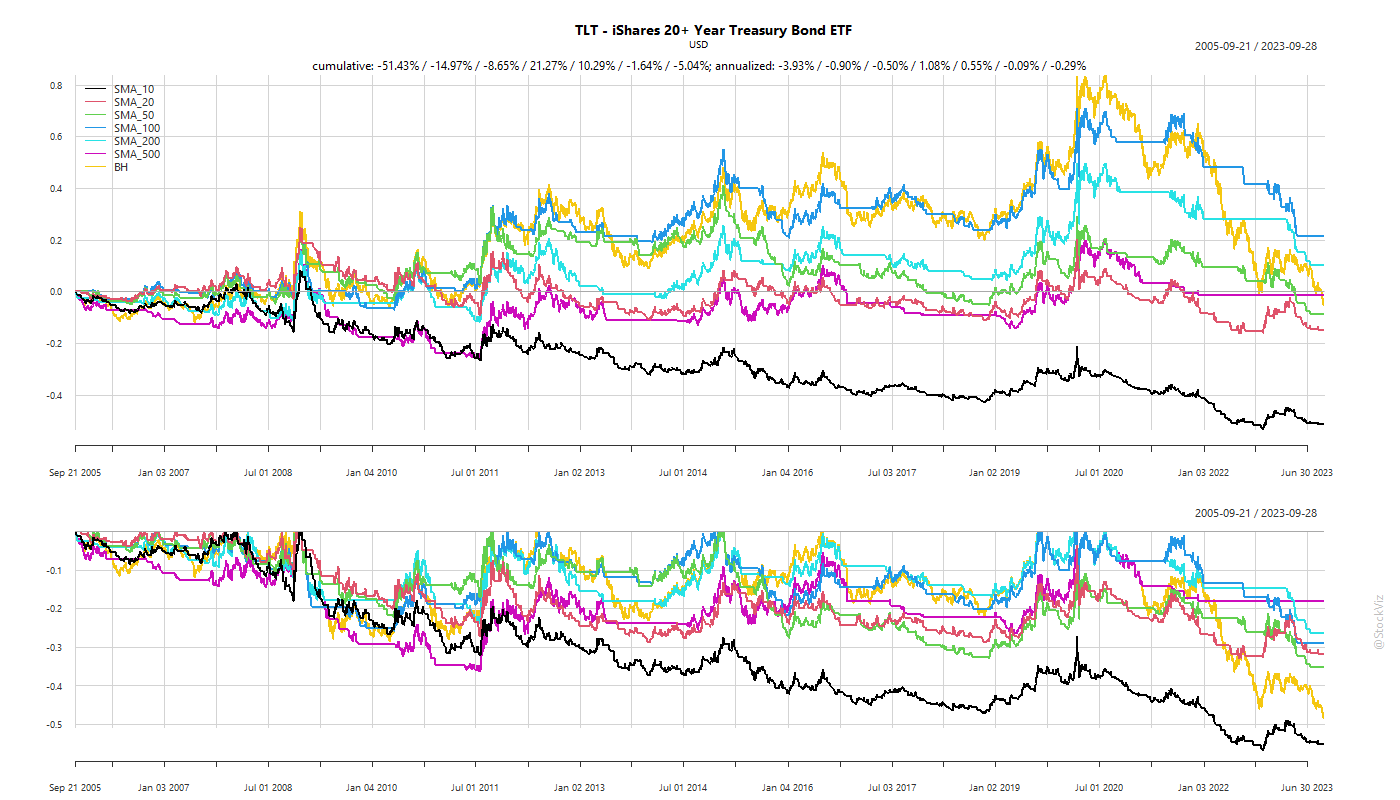
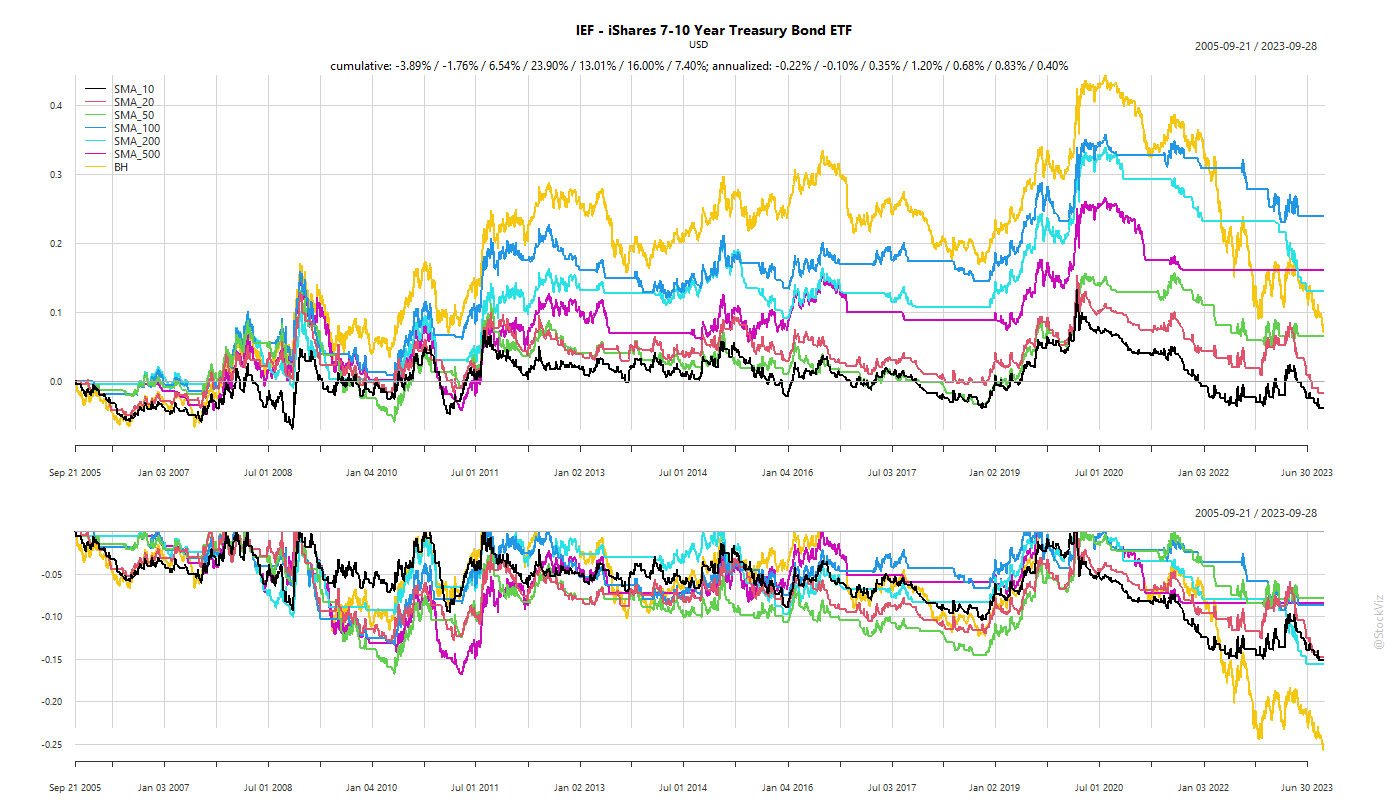

Code and charts on github.




